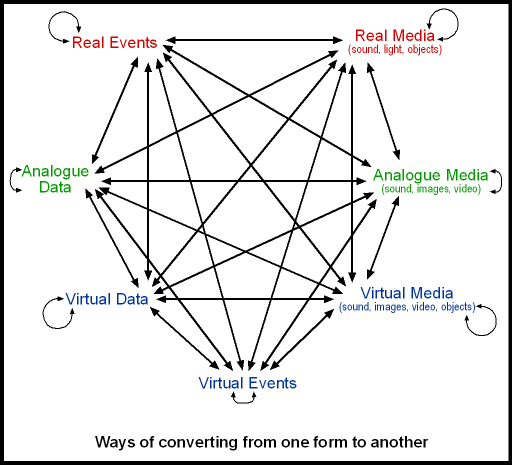21 June, 2006
by Eric
2 Comments
I wanted to let people know about the origins of the music I am using as a backing to the podcast at the moment, and as luck would have it, it kind of fits with the topic of the blog/podcast. I’ll play the entire track at the end of this podcast.
I love a wide variety of music, and have been playing percussion since I was about 12. Or should I say I’ve been taking lessons since I was about 12 – apparently I was turning pots over and hitting them with chopsticks not long after I could walk.
Back around the turn of the century (ouch!) I was at university (learning Biochemistry actually, but that is a different story) I met up with some like-minded musicians, and we started playing together on a regular basis. We were really into improvisation, and would hardly ever play the same piece twice. We were also into community involvement and participation, so when jamming, we would do it in a public space around university, and encourage the audience to come join in with a variety of spare instruments we had lying around. We eventually settled on the term JAMM, as in Just About Making Music, which summed it up very eloquently. This was a great experience, not only to be creating something interesting and help people develop their musical skills and expression, but also to quite simply stop me going insane. In Biochemistry Honours, I was researching and writing a 5000 word (roughly 20 page) essay every week, along with other work – it was all very dry and uninspiring, so having the opportunity to really let my creativity fly once a week kind of refreshed me and cleared my head – almost like meditation in many respects.
I often recorded our work, but at one stage, we decided to do a more professional recording, so we went out to the Ellesmere Concert Band hall where some of us also played, took along a 4-Track hard drive recorder, and got to it. We had Siva Sothinathan on guitar, Matthew Redmond on Keyboard and myself on Drums, though we did switch around a bit too.
The backing track is actually from the first track we recorded. The really interesting things about this recording was that it was entirely improvised and that it was recorded in its entirety. while we took a break between songs, we did each song in one take, We never composed or rehearsed beforehand and as far as I can recall, we didn’t chop any of it out. Afterwards, I transferred the tracks to a computer and mastered the levels and tones, but that is about all that was tweaked.
We ended up with 5 long songs that filled a CD, so I chopped it into about 14 tracks where the themes change, but set the CD to have 0 seconds pause between tracks, so it does not interrupt the flow of the original songs. We called the CD “Organic JAMM, Adliberation”, though we never could decide which was the name of the band and which was the name of the CD. In the end we decided that the CD would be called Adliberation, but that in the future, all CDs we make would be called Adliberation, and that the name of the band would change for each CD. While this is humorously unorthodox, it is also very appropriate, because the people playing in the band would probably be different each time, while the philosophy of the music would stay the same.
Unfortunately, the core JAMM members have scattered across the globe (New Zealand, USA, Malaysia) so I don’t think a single pair of them are in the same city now. So we’ve been planning to do set up a Web 2.1 website to support remote JAMMing, but more on that in a later episode.
So play the audio below and skip to about 4mins 30 sec to hear the song. Or better yet, subscribe to the PodCast version and have it all downloaded to your MP3 player automatically.


